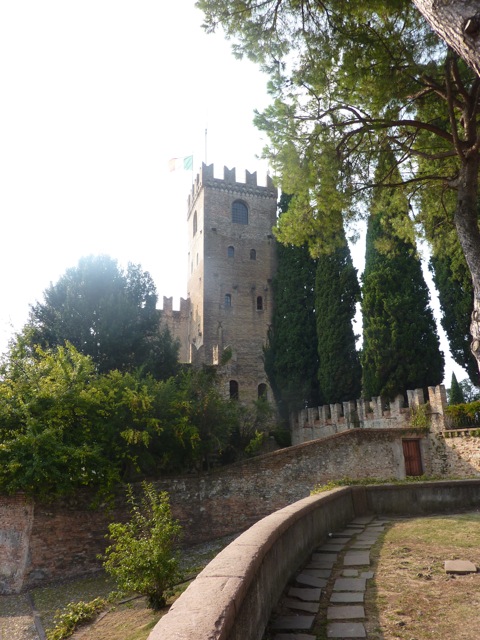
Conegliano is a town located in the Veneto region, in the province of Treviso. Located about 30 km north of the city of Treviso, it lies in the foothills of the Dolomites and is most noted for its wine, Italy’s favorite sparkling aperitif, Prosecco.
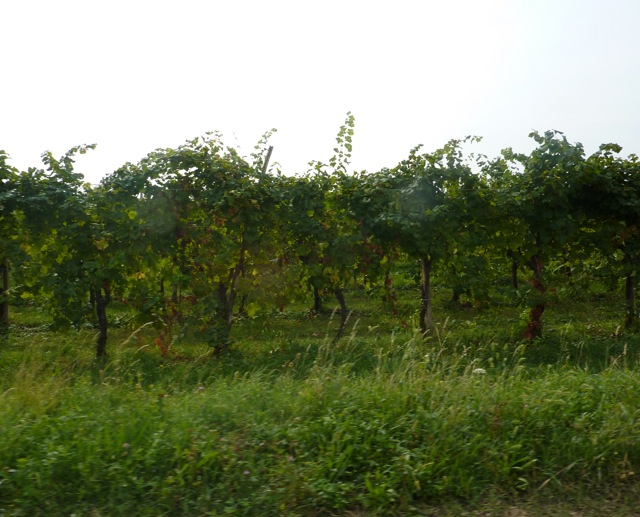
We visit Conegliano on a couple of our bike tours, as it offers some wonderful routes for all levels of cyclists. Approaching from the south and west from Castelfranco, Montebelluno, and Treviso, we find flatter terrain along the Piave River valley which we explore during our Primavera del Prosecco bike tour. This valley is known for both the Piave DOP cheese as well as its’ own DOC wine zone, featuring the native Raboso varietal, one of Italy’s best ‘big’ reds.
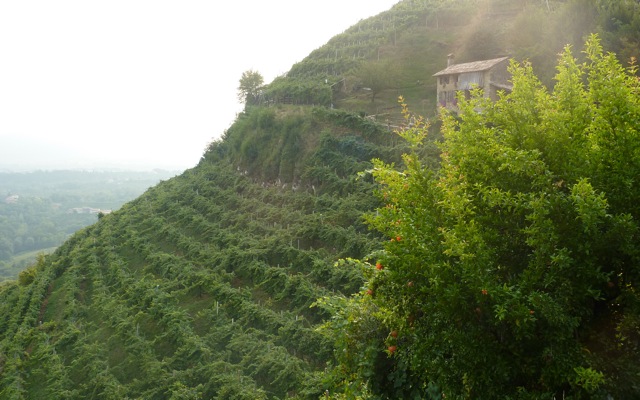
For those that desire more challenging terrain, we can climb some hills in the Prosecco wine region. Conegliano is one of the two end points of the preeminent locale for Prosecco production – the Conegliano Valdobbiadene DOCG region. In these picturesque hillside vineyards, locals grow grapes for the best proseccos in the world. With advanced cyclists, we head north through Vittoria Veneto to the Bosco di Cansiglio. The Bosco (or forest) is where the Venetian’s obtained the wood needed for their sailing ships, back in the height of the Venetian republic when they were producing one ship per day. Here, we tackle Passo Crosetta, a climb that has been part of the Giro d’Italia several times, and included on our Train Like a Local – Mid Mountain cycling tour.
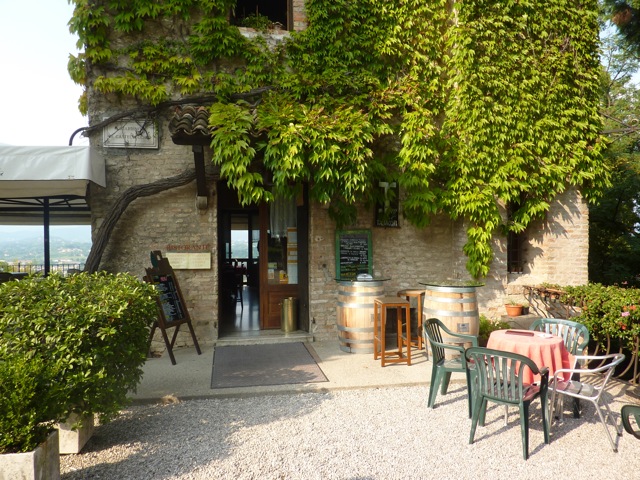
Conegliano itself is an interesting place to explore after our rides. A couple of spots well worth a visit include the Cathedral, dating from 1491, and adorned with important frescoes and paintings, including a renowned altarpiece from noted artist Cima di Conegliano. A short (but uphill) walk outside the city brings one to the Castello di Conegliano with its beautiful bell tower. At one time, this tower contained a large bell used to summon the populace and signal the start of the City Council meetings. Today, the Torre della Campana (bell tower), houses the Civic Museum, with a wonderful collection of paintings. After a tour of the gallery, stop and enjoy a snack, a glass of a local wine and the panoramic view from Ristorante “Al Castello”.
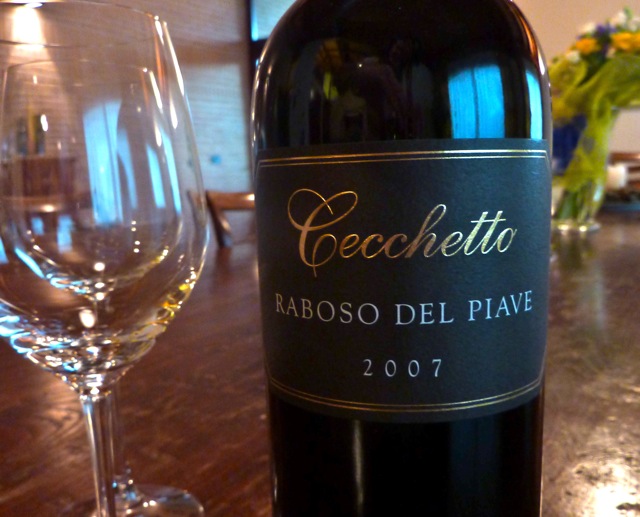
Noted for its wines, Conegliano is the home of Italy’s oldest and most prestigious wine school, the Scuola Enologica. Conegliano is on the cusp of three distinct wine zones – the aforementioned Conegliano Valdobbiadene DOCG, known for its quality prosecco, as well as two lesser known regions, the Piave and the Colli di Conegliano. The Piave DOC stretches from the hills near Conegliano south to the shores of the Adriatic. Piave is known for its’ wonderful indigenous varietal, Raboso, an ancient wine made here since before the time of the Roman empire. In this region today, you will find several local producers devoted to rediscovering and promoting this native treasure. Finally, the Colli di Conegliano DOCG produces some very interesting blends; its Rosso combines the native Marzemino grape with international varietals such as Cabernet Franc and Cabernet Sauvignon to make a big, fruity, tannic wine. The Bianco is a crisp and fruity blend of Chardonnay and the local Incrocio Manzoni. Two very interesting and rare sweet wines are produced as well, the Rosso Refrontolo and the white Torchiato di Fregona.
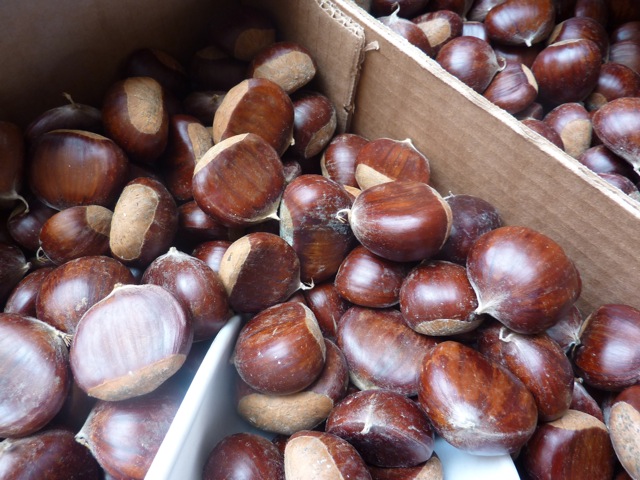
You will find some wonderful local food products as well on your visit. South of Conegliano, along the fertile planes of the Piave river, you will find fields of the local corn variety, Mais Biancoperla, considered the ideal grain for the delicate white polenta. The entire province of Treviso is known for its many different varieties of radicchio, many more than we come across here in the US. Cured meats, such as sopressa, salame and cotecchino are produced nearby, as well as various forms of preserved goose, as salame, prosciutto, or preserved in goose fat. Many superb cheeses hail from this area, include Montasio, Casatella Trevigiana, Taleggio, Urbiaco, Asiago, and, of course, Piave. To the north, in the Prealps, chestnuts have been cultivated for centuries, a food staple for many poorer families. They are one of few crops that can be grown on steep slopes, as well as produce during colder winter months. Chestnuts are typically dried, and then either boiled or ground up into flour and used in a variety of dishes, from breads and pastas to dessert. A market visit in the fall will always include a stop by the vendor who is roasting chestnuts, the wonderful aroma making it impossible not to stop for a few to snack on.
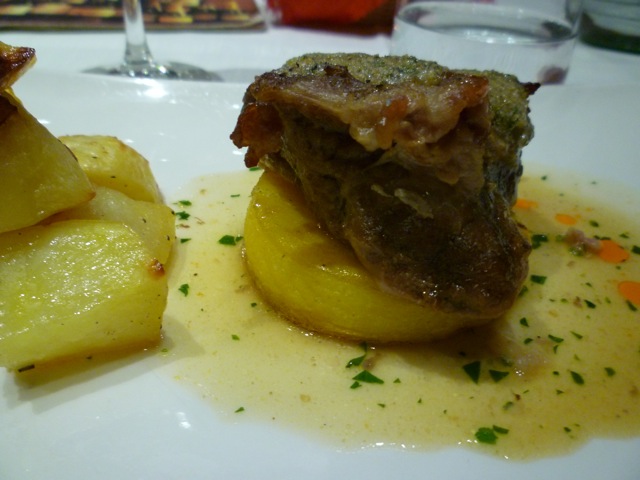
A nice place to enjoy a meal in Conegliano is Ristorante Al Salisa, right on Via XX Settembre. They offer an eclectic menu, with both traditional dishes (piatti tipici regionali) as well as more innovative plates, including curries and sushi. I enjoyed a delicious zuppe di fagioli (bean soup) on my last visit, as well as giuanciale di vitello (braised veal cheeks) served with polenta and vegetables.
